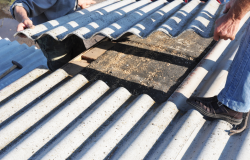Property Sinking Funds – What Investors Need To Know
Property sinking funds are used by owners in strata community schemes to refer to a savings account that is set up for large, unexpected repairs or renovations. This is one of the many reasons why it’s important for anyone who buys into a strata community scheme to know about sinking funds; this knowledge helps make them better property investors.
Read on as we dissect property sinking funds to understand their crucial role.
What Are Property Sinking Funds?
A sinking fund is a reserve account that’s set up to protect the value of a property. It is often used as an investment vehicle by investors who want to make sure their money will not be lost or devalued over time.
Sinking funds can be used for various purposes, including:
- covering the costs of repairs and maintenance
- replacing assets (such as appliances)
Is It Mandatory?
In some States, sinking funds are mandatory. This means you must establish a sinking fund if you have any fixed charges on your property. If this is not the case in your State, it’s still highly recommended to establish one as the benefits far outweigh any costs associated with doing so and can help avoid expensive long-term debts.
Property sinking funds protect property investors by reducing or eliminating their liability for future expenses related to their investment properties. These include both capital works such as major renovations or extensions, as well as day-to-day repairs and maintenance tasks such as replacing broken windows or fixing pipes that burst after an extended period of rain.
How Are They Managed?
Sinking funds are managed by owner corporations. Sinking fund committees are elected to manage the sinking funds, and must hold regular meetings and keep records of all transactions. Committees must report at owners’ corporation meetings, and make reports available to all owners.
Sinking fund accounts may be held at a bank or other financial institution that is not associated with an owner or occupier of an affected lot (for example, as trustee for the money in the sinking fund).
Who Pays For Property Sinking Funds?
A Brisbane sinking fund is a compulsory levy on all strata lot owners in Queensland. It is used to pay for maintenance and replacement of common property items such as lifts, balconies, parking spaces and exterior areas of buildings. The sinking fund is paid into a trust account run by the strata management corporation (SMC).
The owner-landlord of the property pays this levy on behalf of each tenant who occupies their unit. The amount due will be deducted from each tenant’s rent payment every month, with any surplus funds being paid back to the tenant at the end of each financial year as an offset against their next year’s rateable value contribution.
What Can The Money Be Used For?
The sinking fund is the money that has been set aside for these purposes. If you have not set up a sinking fund, then you will need to pay for these expenses out of your regular body corporate fees.
The money in the sinking fund can only be used for expenses relating to common property (such as roof repairs) or legal actions involving the body corporate (such as letting your neighbours know they are breaking noise regulations). It can also be used to pay insurance premiums and council rates, but only if those bills are already due and payable. The last thing you want is to find yourself paying someone else’s bills because they’ve missed theirs!
When Are Property Sinking Funds Used?
Property sinking funds are used in a variety of situations, including:
- When a building needs maintenance or repairs. If your property is in good condition but you know that there will be some costs associated with keeping it that way, you can use a sinking fund to cover these expenses. This can include things like replacing appliances, maintaining the plumbing and electrical systems, and making small upgrades as needed.
- When a building needs to be upgraded. In some cases, an upgrade might not seem necessary at first glance—after all, if everything works well enough now and there’s no reason for residents to complain about their living conditions then why spend money on something new? But consider this: if someone moves into one of your units who has very different needs than those who currently occupy other parts of your property (such as requiring wheelchair access), then upgrading may become necessary sooner than expected. An investment now could save you more expensive investments later on down the road!
- When a building needs demolition or rebuilding after being damaged beyond repair during natural disasters such as hurricanes or floods (or even man-made disasters like fires). Building codes require certain standards when constructing buildings so they don’t collapse without warning—but sometimes nature doesn’t care about these rules! A good example comes from February 2003 when an earthquake struck San Francisco: many buildings collapsed because they weren’t built according






